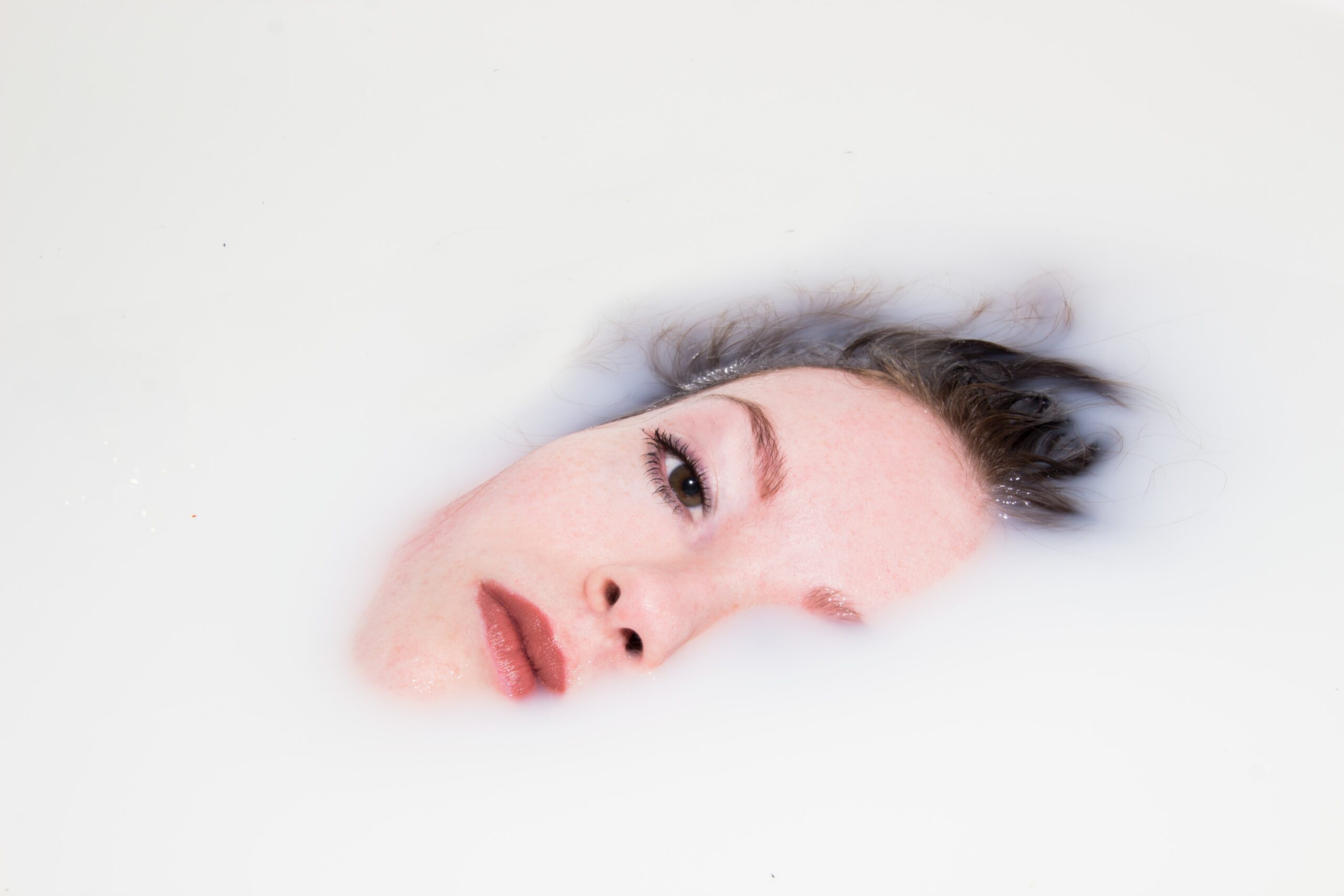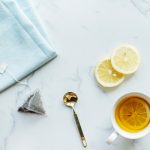History says that Cleopatra frequently indulged in a milk bath enriched with herbs and honey. Although we can’t be 100% sure that this was true, there’s evidence that she wouldn’t have been the only royal woman taking milk baths in those times. Only a few decades after Cleopatra’s death, Poppaea, the second wife of Emperor Nero, as historian Tacitus said, the most beautiful woman of her time, always traveled with a herd of female donkeys so that she could milk them and use them in baths.
While the milk bath was reserved for royalty, today, every woman can afford to take advantage of an easy nourishing milk bath for self-care for beneficial effects on the skin. Mixing milk with the bathwater has been practiced for centuries as a fast, easy, and cheap way to moisturize and soften your skin while you simply relax in the tub.
What is a Milk Bath?

Silkier than a bubble wash and creamier than a soak, milk baths are incredible at leaving your skin soft and smooth when you finally drain the plug. Why? Because milk is naturally rich in lactic acid, meaning it helps to exfoliate and soften the skin as you soak. Also, milk is super nourishing, calming, and soothing, so bath milk works as a whole-body treatment while you do absolutely nothing but relax with your magazine in hand and favorite song on. So it’s a win-win situation.
Milk baths have extra attention in this year’s beauty trends, especially with the pandemic outbreak and people spending more time in the coziness of their homes. You can find all kinds of bath milk in combination with therapeutic and healing herbs and essential oils, which play a vital role in a nourishing milk bath. Still, you should always choose the ones which are based on nutrient-rich milk and watch for those with unnatural additives like artificial dyes. Each can be selected for their scent, color, texture, or health-supporting benefits—creating a one of a kind nourishing aromatherapy experience.
Home Spa Treatment with a Bath Milk
So first things first, warm your robe! You don’t want to miss that cozy feeling when you slip on the warm robe, right after a nourishing milk bath. Your bath routine will be just like a luxurious spa day with this little detail. As you know, spas have a certain ambiance—they’re calming, serene, and minimalistic. So to create the perfect ambiance, you can light candles and place them around the bathroom. Look for candles that contain calming lavender, chamomile, vetiver, or neroli scents.
Then it’s time to pour warm water for your easy nourishing milk bath for self-care. Experts say a warm bath is much more calming. Be sure to test the water with your hands because they can tolerate much higher temperatures than the rest of your body. Once the tub is full, scoop half a cup of your bath milk and pour it into the water. Slip in, let the scent give you a grounded feeling.
There are many plant-based ingredients that you can add to your bath water for their healing, nourishing effects. Many milk bath recipes include a carrier oil like coconut oil, jojoba oil, almond oil, arnica or avocado oil, and essential oils, like lavender, rose, chamomile, geranium, or grapefruit. Soak in the mineral salt and essential oils to ease tension and relax nerves.
Now it’s time to lay back and enjoy. You can also roll up a hand towel to put under your neck to make your bath feeling a bit more luxurious. For the ultimate experience, you can apply a face mask for around ten minutes and wash it with a warm cloth.
Breathe in the positive vibes, breathe out all the constant pressures and stress of modern-day life. This is the perfect way to unwind while practicing a beautiful and healthy lifestyle for an easy nourishing milk bath for self-care.
When to Get Out
As much as we like to spend a full hour relaxing in the tub, there is a benefit from knowing when to get out. Usually, if your fingers and toes start to wrinkle, it’s probably time to get out, as that’s a sign that prolonged contact with water is beginning to damage the outer layer of the skin. Once the bath is done, don’t forget to rinse off thoroughly and deeply moisturize your skin.
Benefits of a Milk Bath
With milk baths, you are getting the benefits of relaxing and reducing stress in a warm, comforting bath — plus, you are taking advantage of the soothing and hydrating properties of milk. The benefit of a milk bath, as suggested by some health experts, is that it helps improve symptoms of some skin problems. Milk baths are soothing for dry, itchy skin because of the moisturizing fats in the milk. It may help to calm redness from a sunburn or to reduce some of the dryness and itching caused by skin conditions such as xerosis or eczema. However, the benefits don’t stop at your skin – the natural fats in milk may be suitable for your hair, too. Some recipes for at-home hair rinses involve milk as an ingredient to assist in conditioning dry, damaged strands. So, letting your hair soak for some time while you’re in the tub may help add some life back to it.
A milk bath shouldn’t replace your usual skincare routine and medication, but practicing this ancient tradition of bathing in milk will nurture your body and spirit.
Takeaway
Bath milk is made primarily to nourish and moisturize; it is very gentle and safe, especially for people with sensitive skin. Its benefits and remedies are easily noticeable, due to the lactic acid, which encourages the skin to shed its old, dead skin cells to reveal the new, healthy ones hidden underneath.
The choices available today run the complete range from handcrafted products made with natural ingredients to foaming products similar to bubble bath. You can choose whatever powerful combinations of healing herbs and nutrient-rich milk are soothing for you. Set your mind on one and be a modern Cleopatra or Poppea.
Read more:



